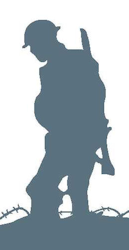Name
Frederick John Robins
Conflict
First World War
Date of Death / Age
Rank, Service Number & Service Details
4994
252nd Infantry Battalion
26th Training Reserve
Awards: Service Medals/Honour Awards
Not Yet Researched
Cemetery/Memorial: Name/Reference/Country
Headstone Inscription
Not Researched
UK & Other Memorials
Biography
Frederick Robins was born on 17th July 1893 at Abbots Langley. He was one of six children (four sons and two daughters) born to Frederick (senior) and Elizabeth Robins. In all three of the four sons served in the Great War. In the 1901 and 1911 Census the family was recorded living at Garden Road, Abbots Langley, and Frederick (senior) was employed as a Stockman at Cecil Lodge. In 1911 Frederick (junior) worked as a Poultry Lad, and the Kelly’s Directory of 1912 listed him being employed as a Bailiff by Mrs Cleasby at Mansion Farm.
Frederick (junior) attested at 62 Queen’s Road, Watford on 14th February 1916 and joined the Suffolk Regiment. He gave his address at 4 Garden Road, Abbots Langley and his occupation as a Cow Man. The next day he was posted to the Army Reserve, and was not mobilised until 15th June 1916, and was sent to Bedford for a Medical Examination which he passed, A1 fit. He was then sent to Harwich on 16th June to prepare for embarkation, and was posted to the 10th Suffolk’s. He was recorded for the first time in the Abbots Langley Parish Magazine Roll of Honour in July 1916, and the next month was listed serving with the 10th Suffolk’s. He remained at Harwich and on 1st September 1916 was transferred to the 26th Training Reserve 252nd Infantry Battalion (Bedfordshire’s). His health must have deteriorated as on 25th October 1916 he undertook a further Medical Examination and was classified as Category E, and was transferred to the Army Reserve. Another Medical Examination took place at Harwich on 4th December 1916, where it was identified that Frederick suffered from a disability called Disordered Action of the Heart (D.A.H). The Cambridge Medical Journal (January 1955) noted that “soldiers suffering from unexplained symptoms were often categorised by doctors as D.A.H”. It was reported that Frederick had “suffered from the disability for some time, and since he had been serving had not been able to do any work for a long time, and not able to do any parades”. He was described as being “short of breath and had had attacks of fainting. His heart action was very rapid and he suffered from indigestion and had very bad teeth”. The Report concluded that the symptoms had not been caused by Military Service, and recommended that he be discharged as permanently unfit. However he was not discharged at this point and continued in service.
Frederick appeared before an Invalidity Board at Dovercourt on 7th December 1916 and was examined again on 21st February 1917. He was examined by No 8 Travelling Medical Board on 24th October 1917, and declared “not likely to be fit”, and again by the same Board on 12th September 1918, with the same outcome.
The National Roll of the Great War noted that he was unable to obtain a transfer overseas before the termination of hostilities, but had been engaged on important duties in connection with the defence of the South and South-east coasts, and had also been employed on Military Police duties. On 18th March 1919 Frederick was posted to the 52nd Graduated Battalion of the Bedfordshire Regiment. Since October 1914 “Grad” battalions had been raised as Home Defence and Training Battalions. In March 1919 the 52nd Battalion was sent to join the British Army of the Rhine, and remained there until August 1919. Frederick was finally discharged on 31st August 1919, and was demobilised to 4 Garden Road, Abbots Langley on 29th September 1919.
Frederick Robins survived the War, as did his brothers Percy and Lewis. However his brother-in-law Albert Abbott was killed in action on the Somme on 1st July 1916, serving with the 1st Battalion of the Somerset Light Infantry.
Additional Information
Formerly 34194, 52nd Graduated Battalion Bedfordshire Regiment & 10th Battalion Suffolk Regiment. Discharged.
Acknowledgments
Roger Yapp - www.backtothefront.org



